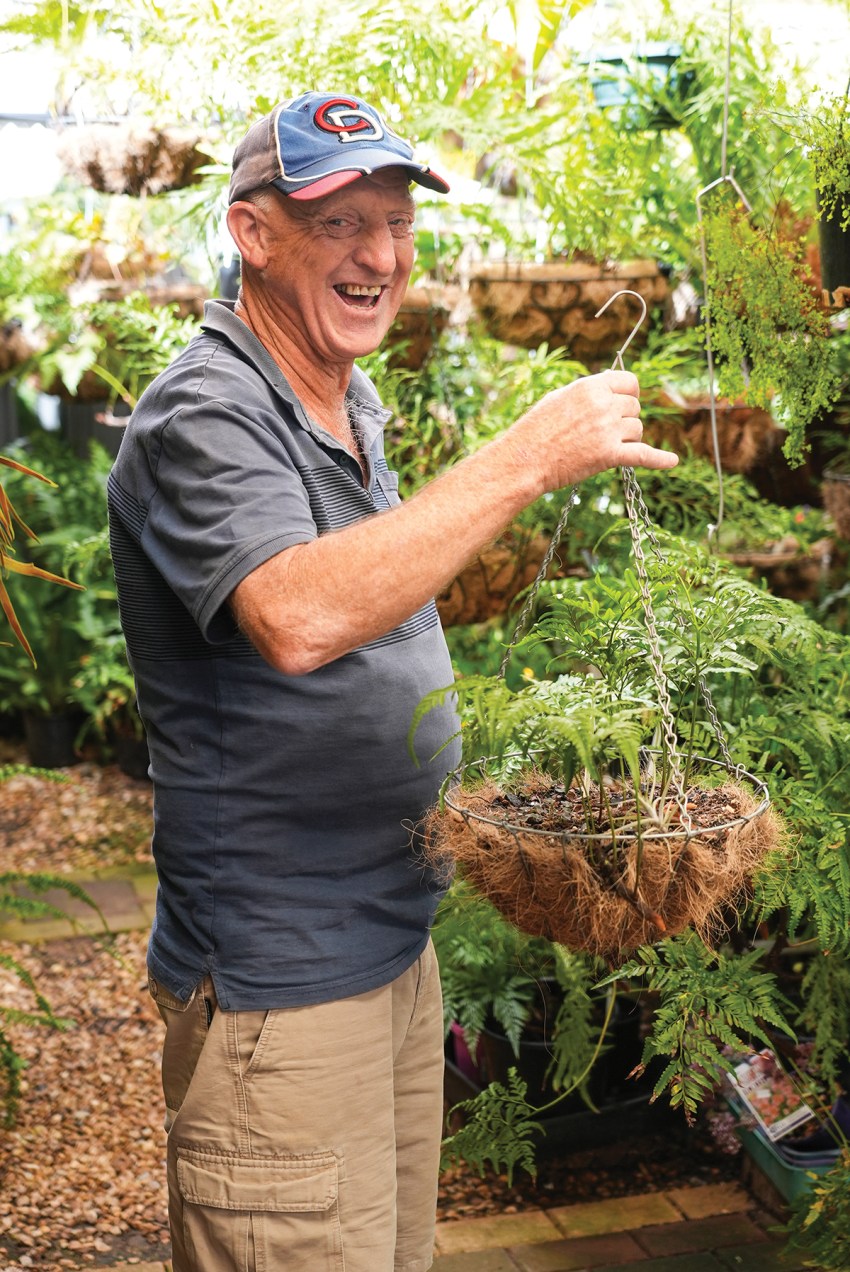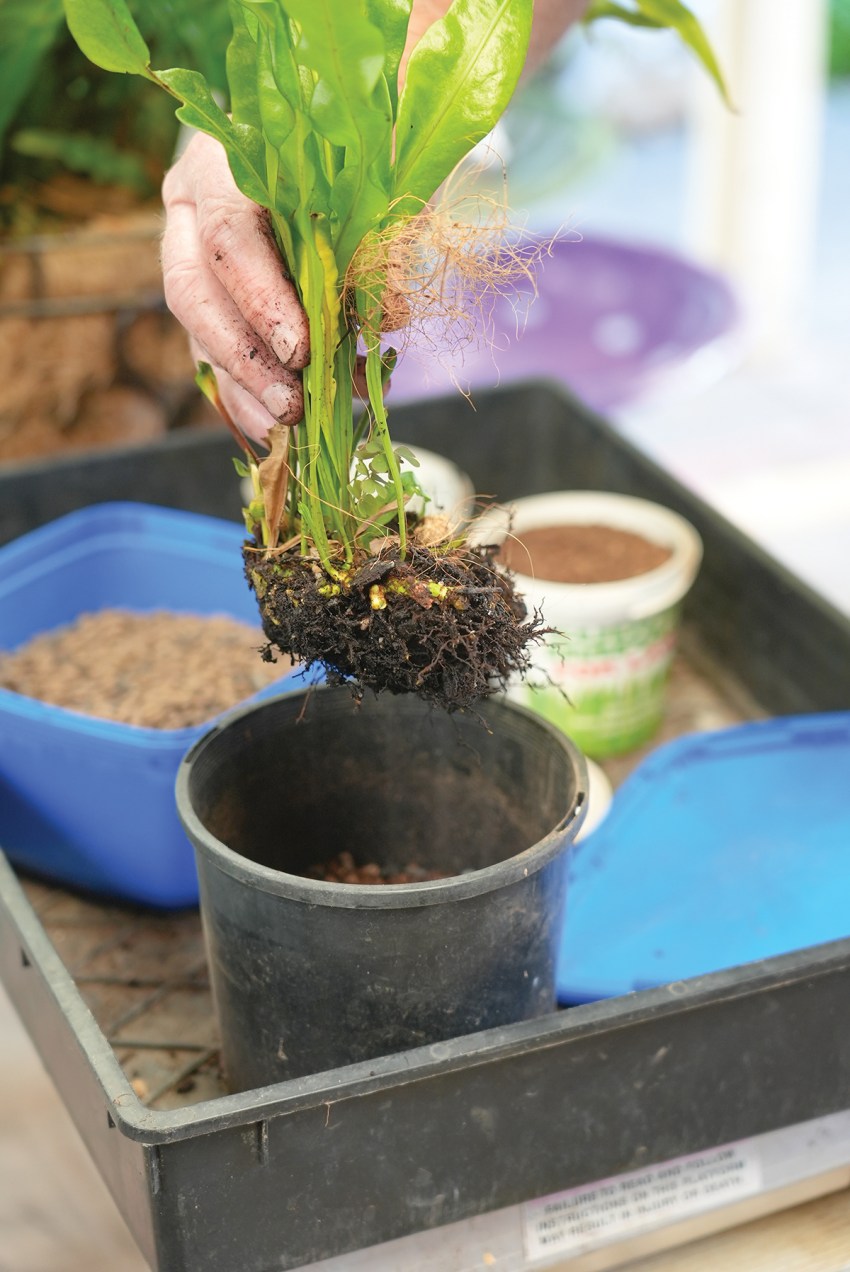Ferns are an ancient member of the plant world. Older than the dinosaurs, they were thriving on earth two hundred million years before flowering plants evolved. They have survived ice ages and the ravages of time. And they could survive your backyard, too.
From the late 1800s, large Adelaide suburban blocks allowed fern loving gardeners space to construct shade houses, potter, fill and admire these rainforest beauties. Sadly, the move to smaller home plots over the years has seen the demise of the grand fern houses. Competition for green space is now incredibly fierce, so fruit trees and vegetable gardens tend to leave ferns a little forgotten.
Thankfully there is an enthusiastic group of fern lovers keen to extoll the virtues of these fascinating ancients of the plant world: the Fern Society of South Australia.

Society president Wayne Richards is part of that charge. Wayne’s love of ferns came later in life. After he retired from work and his duties as grandfather eased, he was looking for a hobby. Fascinated by the diversity and colours of ferns encountered on his numerous trips to Queensland over the years, Wayne reflected on those memories and wondered if these plants could be grown in Adelaide.
One meeting at the local fern society and he was hooked. Three stints as president of the Fern Society of SA demonstrates his commitment to this astonishing plant group. Wayne is quick to explain what makes ferns so appealing.
“It’s purely visual appeal, ferns have a lush green look, different shaped fronds, and a range of species all different to the other, so you get interest and variety,” he says.
Another point Wayne raises is that ferns do not have flowers; instead producing spores, often mistaken for fungal patches on the back of fronds. Just like seeds, spores, if allowed to germinate, will produce a new generation of ferns.
Wayne has dedicated space to growing ferns under his courtyard verandah, showcasing that even in a smaller yard you can create a spectacular fern haven.

Ferns don’t like direct light. While a touch of morning sun may be ok, blocking off any afternoon rays, especially over summer, is a must. Just as they thrive under the dappled light of a rainforest canopy, ferns’ preferred urban locations are a shaded pergola, under a deciduous tree or in a low-sun aspect of the garden.
If hanging ferns, be careful not to place too high, especially under opaque roofing which can heat and potentially burn fronds. Another tip is to keep them away from windy spots; the more protected the better.
“We kill more ferns with kindness”, remarks Wayne. “Too much water makes roots soggy and waterlogged causing the top growth to die off. The best way to see if a plant needs watering is to test with your finger. If the mix feels damp, then leave, if it feels a little dry then give it a drink”.
Wayne favours overhead watering for most ferns because it helps wash off any dust, while also building welcome humidity around the plants. One exception is maidenhair ferns, which prefer irrigation at pot level. Lift the fronds and tip in some water, this avoids fungal issues developing on damp foliage. Free-draining potting mix helps reduce waterlogging issues.
The Fern Society of SA suggests a growing media of 50 per cent premium potting mix and 50 per cent orchid bark, plus a handful of horticultural charcoal. A balanced mix that stays damp, but not wet.

Subscribe for updates
Wayne gives his plants their main feed in spring and autumn using a dedicated liquid fern fertiliser. He adds a solution to a bucket then dunks a pot in, leaving for 10 minutes until the air bubbles have stopped, lifts, drains, places back and repeats with another plant. Following up with a foliar fertiliser spray every six weeks during the growing season of September to mid-April, does wonders.
If a fern is small and has outgrown its container, it’s best to go up one pot size (for example move from a 150mm pot to a 175mm one), which helps the plant establish more quickly. Keep moving until the final container size is reached. After that, as you need, you can tip out the plant, replace with fresh mix and repot.
Many ferns make great indoor plants, and just as it is with the outdoors, light is critical. Keep your fern away from direct sun, in a place that receives enough sunlight that you could easily read a book or magazine. Naturally lit bathrooms provide additional humidity and are places where ferns can thrive. Also, move your indoor fern away from draughts around doorways and air conditioning vents.
“Growing two plants of each variety allows one to stay indoors and the other outside. Swap them over when the indoors one needs a spell,” offers the ever-knowledgeable Wayne.
The Fern Society of South Australia is a wonderful resource for anyone looking to grow or learn more about ferns. They’d love to hear from you!
Looking at getting into ferns? Here are some of Wayne Richards’ “easy to grow” recommendations:
Elk Horns and Stag Horns:
High impact and low care. Fixed to a backing board, they can achieve spectacular forms and size in little time. Poke a handful of sphagnum moss between the plant and board, along with some Rapid Raiser or other organic based fertiliser once a year, then water every fortnight to month, depending on the weather. What could be easier!
Kangaroo Fern:
So versatile, grown in pots, baskets, and ground, it’s also a great indoor plant. This eye-catching Australian native has beautiful, wavy glossy green leathery leaves and makes a lovely, low-maintenance plant for home or office.
Sword Fern:
Sometimes called “Boston Fern”. An elegant-looking fern with deeply divided, spreading bright green fronds that create a fantastic fountain-like display. Ideal for hanging baskets where it can show off its drooping habit. Super hardy!
Rabbit’s Foot Fern:
One of 40 Davallia varieties worldwide, these are Wayne’s favourite ferns, easily identified by their “fluffy” rhizomes that fill and creep. A resilient fern that can live both inside and outside, best grown in a hanging basket or shallow pot to allow the rhizomes space to stretch.
Drynaria:
A species that does exceptionally well in South Australian gardens. Another fern characterised with “furry” rhizomes. They are simple to grow being a terrestrial fern found among crevices in rocks.





